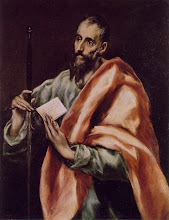Africa, as the second largest continent, is a home to more than 50 countries and thousands of different ethnic and religious groups, which formed and shaped the countless artistic traditions. The kind of arts produced from region to region depends on the different religions.
Native African religions greatly influenced the art objects rather than the architectures. They do not require the use of religious buildings for prayer but they professed their faith more through religious objects such as statues, mask, or other objects especially during rituals and ceremonies. Rituals were meant to exercise control over the insecurity of life by binding together positive forces from ancestors, gods, or other spirits and by restricting negative forces.
Most of them, native Africans, used art objects like wooden or clay figurines to contact ancestor spirits who, as they believed, act as intermediaries between human community and God, the Creator. The governing bodies in their group used these art objects, as well, to maintain social order and good relationship with their ancestors' spirits. Among the Kota of Gabon, carved wooden figurines serves as guardians who protect and oversee the remains of dead ancestors and those significant individuals who made intercession for them to the All-Mighty Creator.
Sculptured traditional African arts from the Western part became internationally known. These wood carvings, clay sculpture, bronze casting, jewelry, and weaving were also used in religious practices.
Sculpture was not only applied by Africans on wood or other materials. It was also applied on their skin. This art was called scarification and was used for divination practices. This was made by cutting the skin and put irritants on it to produce scar or markings. This form of art still continues not on skin anymore but on their carved statues and images wherein they put markings on the statues' body parts to show scarification.
Another significant traditional art was the furniture like the stool and headrest. Stools were the especially designed carved wooden seat with spiritual functions. The Lubas of central Africa made caryatid stools wherein a figure, male or female, is carved out of the wooden stools to represent the owner's important ancestor.
The headrest, on the other hand, was the carved wooden pillow of the Africans. Among the Shona (people with special spiritual powers) of the southern Africa, their carved headrests were designed to communicate with the ancestors through their dreams.
Some Africans, especially the Mijikenda of Kenya honor their dead by carving wooden posts called vigangu. Groups in Ethiopia, Sudan, Tanzania, and Madagascar followed this practice by creating similar post-shaped funerary sculptures.
In the eastern and western part of Africa, architecture arts were built with religious implications such as the Mosque, the Islam's house of prayer. The king of Ethiopia, when they adopted Christianity as their religion, carved 11 churches out of solid volcanic rocks.
Some were carved below ground level with deep trenches around, some were attached to surroundings. These churches were connected by a network of tunnels and narrow passageways.
Africa has rich varieties of arts. It includes not only the architectural structures, the carved figurines and the sculptured objects but also the art in the field of painting, rhythm, dancing, and literary. The spiritual implications of every artistic piece make the African arts unique around the world.
Rod Dagan invites you to explore the culture and arts of Africa you can also find more about arts, crafts and culture from native and aboriginal peoples from around the world at Native Art World

No comments:
Post a Comment